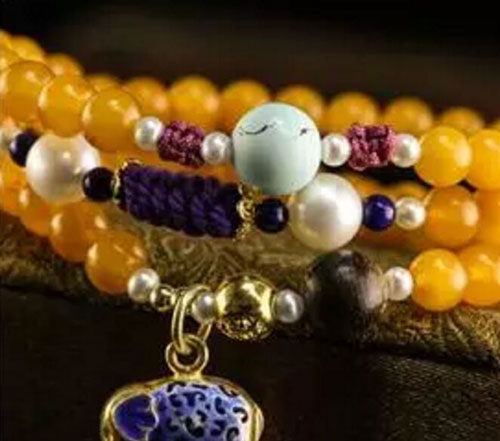Teach you how to identify true and false beeswax?
Wax is regarded by the Chinese as one of the seven treasures of Buddhism. There have been several different names from ancient times to today, such as tiger clam, amber, pe, beeswax, jade, red rosin, etc. And the times. Honey wax contains countless colors, some are transparent, some are translucent, and some are opaque but colorful. There is no similarity in the world's beeswax, and any one is unique. This is one of the main reasons why many stars love beeswax.
The beeswax is as moist as jade, and the low-key is full of luxury. In addition, Aji once introduced the natural medicinal value of beeswax last time. I believe it has attracted a large number of people, huge market demand and the enthusiasm of many powerful players. The beeswax market is extremely hot, and the price has soared. This also provides an opportunity for counterfeiters. How do you tell the true and false beeswax? Will reveal the answer for you.
In order to identify counterfeit and shoddy products, we must first understand the characteristics of true beeswax. Aji believes that the following methods can be used mainly:
1. Eyes: The natural beeswax exudes a warm, soft luster, and during the formation process, due to the layering of the resin, a flow pattern resembling a viscous liquid that slowly faints is presented.
2, hand touch: natural beeswax is a neutral gem, moderate temperature, and glass imitation will have a colder feeling.
3. Friction: The natural beeswax generates static electricity after rubbing on the clothes, which can attract fine paper scraps.
4, nose smell: rubbing the natural beeswax quickly by hand, after careful taste will have a touch of loose flavor, this is an important basis for the identification of authenticity.
5. Violet lamp illumination: Under the illumination of purple light, natural beeswax will show different colors such as fluorescence, light green, green, blue and white. The plastic imitation does not change color, and the fluorescence of the pressed beeswax (commonly known as the second generation wax) is small and fragmented.

Natural beeswax road is cloud-like floc
It turns out that there are so many doorways in the real beeswax. As the saying goes, "Know yourself and know each other, win every battle", understand the characteristics of the real thing, and also know the characteristics of counterfeit goods. There are three main types of imitation beeswax: plastic imitation, Ke Ba resin, pressed beeswax, the following Aji will crack for you one by one:
1, plastic imitation
It can be screened by saturated saline solution. The relative density of most plastics is higher than 1.33. It can be judged as plastic imitation when it is sunk in saturated brine. The relative density of a few plastics is lower than that of saturated brine. It can also be raised upwards. At this time, it can be spit with hot needles. If it is plastic, it will have a pungent smell, which is obviously different from the pine flavor of beeswax.
2, Coba resin
The density, hardness, brittleness and beeswax of Coba resin are very close, but the obvious difference is that the age of the resin is relatively new and not completely petrochemical. The general resin coated with alcohol or ether has a phenomenon of melting in an organic solvent, and the surface is softened, while the genuine product does not melt into these organic solvents, and the surface does not soften.
3, suppressing beeswax
It is a high-end imitation product that appears on the market. It is not easy to distinguish. It is a product that is dissolved at a high temperature by natural beeswax, and then cooled down and pressurized. It is commonly known as “second-generation wax†in the industry. The physical and chemical properties of beeswax are the same as those of natural beeswax. Therefore, the traditional submersible method, alcohol method and electrostatic method cannot separate them. It is more through the experience to suppress the texture of beeswax. Presented as a thin strip of skein, the texture of natural beeswax is natural, and the pressed beeswax is often mixed with red impurities.
Xiaobian takes you to identify the fakes and teaches you how to know the truth. In addition to these, you usually need to observe more, touch more, and feel the characteristics of natural beeswax. Nowadays, beeswax, which is widely recognized by the current market and players, is mainly defined by three aspects: color, texture and appearance. The color of beeswax is numerous, yellow, white and red are common, and chicken yellow is the top grade.
The beeswax is further petrified from amber, so the texture is translucent to slightly transparent, and the high quality beeswax should be completely transparent, which is called "full wax". In addition, from the appearance, the high-quality beeswax jewelry has no cracks and no impurities, and the processing technology is exquisite, and the polishing and the holes are quite perfect. For the old beeswax (a fossil of resin hundreds of millions of years ago, produced in Tibet, Afghanistan, India, etc.), it is also a top-grade product.
Cushion Pillow,Woven Cushion Cover,Cushion Cover Pillow,Sofa Cushion Pillow
SUZHOU JINYULAI TEXTILE CO.,LTD , https://www.jyltextile.com